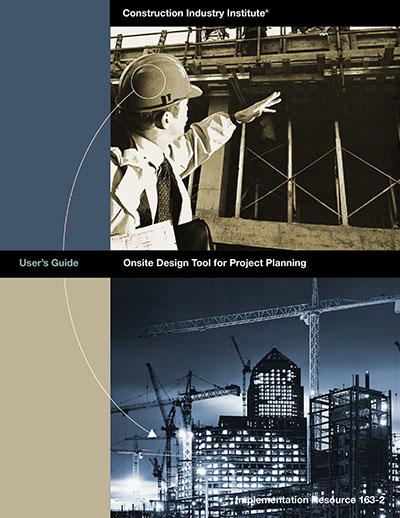
Onsite Design: When and How Much?
The communication interface between design and construction is one of the most critical points of information exchange within a project. When the communication of design information is timely, unambiguous, and easily understood, construction activities are more efficiently performed.
Performing selected design activities on site, to some degree, is a commonly employed technique. However, the use of onsite design varies widely and is a function of project scope, complexity, location, team composition, execution strategy, and many other factors. Important questions such as “When?” and “How much?” should be employed in order for onsite design to influence project performance favorably.
CII created the Evaluating Onsite Design Project Team to address the onsite design issue. The project team found conclusive evidence that onsite design is beneficial and contributes to project success. Projects in the study utilizing onsite design were more constrained by cost, schedule, and technical complexity than projects not using onsite design. Even so, these projects performed as well as those projects not utilizing onsite design in every performance measure category. Furthermore, effective implementation of an onsite design strategy significantly improved 16 of 29 project performance measures.
The project team developed a computer-based decision support tool (CII Implementation Resource 163-2, Onsite Design Tool for Project Planning) that permits users to identify specific design activities that should be performed on site to maximize the likelihood that selected performance measures will be met or exceeded. The tool allows users to generate onsite design strategies for the various project phases and for combined or multiple decision criteria. This publication summarizes the study and introduces the tool.
For projects utilizing onsite design, this research identified these top 15 drivers (listed below) as having a moderate to major influence on the design strategy. Overall the research identified a list of 34 Basis for Decision drivers for executing projects. (RS163-1, p. 5)
- Project type
- Constructability
- Composition of design team
- Technical complexity
- Amount of design-level submittals, approvals, RFIs, constructability, shop drawings
- Level of risk
- Communications interface/use of electronic media
- Schedule constraints
- Alliances or partnering
- Favorable past experience
- Level of scope definition
- Scope control procedures – scope creep/freeze
- Design effectiveness
- Corrective action required during project execution
- Existing site team
To identify the benefits that actually accrue from performing design activities on site, previous CII research was referenced to generate a comprehensive list of 29 project performance measure. These performance measures are broadly categorized as being related to Cost, Quality, Schedule, and Safety. The research discovered that the use of onsite design significantly improved 16 of the 29 performance measures evaluated in the research. Four examples of these 16 are shown below, while all project performance measures are detailed in the research. (RS163-1, p. 6)
- Cost – Value engineering savings
- Quality – Ease of startup
- Schedule – Time to process change orders
- Safety – Safety standards incorporated into design
As part of the research process 50 distinct design activities commonly performed on industrial and commercial type projects were identified. For any given project, the decision to perform any of these activities on site varied with the specific project requirements and the detailed plan for project execution. The research identified the top 10 design activities to be performed on site for each project phase. As example, the top 10 activities for the Front End Planning phase are listed below. Details for all project phases can be found in the research. (RS163-1, p. 8)
- Prepare, monitor, or maintain project scope
- Process and facility planning
- Develop environmental scope
- Prepare/revise preliminary estimates
- Prepare, monitor, or maintain project execution plan
- Conduct site evaluation
- Develop utilities and offsite scope
- Develop/modify site plan
- Prepare, monitor, and maintain schedule
- Develop preliminary design, including PFDs & P&IDs
This decision support tool was developed to assist project teams in determining which design activities should be performed on site, by project phase to achieve improvement in user-selected performance measures. The tool uses the 34 decision drivers and the 29 project performance measures, identified by the research, as selection criteria by the project team in three steps:
- Step 1 – Define the "Why" of your project execution strategy by selecting 5 of the 34 decision drivers.
- Step 2 – Define "What" is critically important to achieve by selecting 5 of the 29 performance measures.
- Step 3 – The OSD Tool generates a specific list of design activities to be performed on site to improve the criteria selected in Steps 1 and 2.
The OSD Tool is useful during the development of the project execution plan; however the flexibility of the tool allows the user to determine which activities are most likely to improve the selected performance measures during any particular project phase. Details of the OSD Tool:



